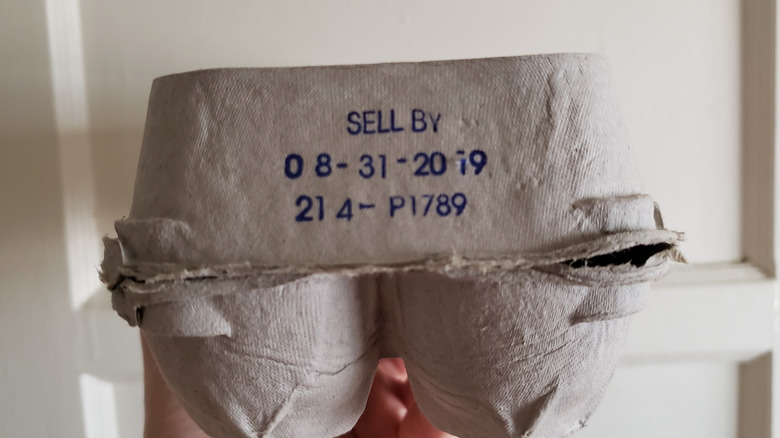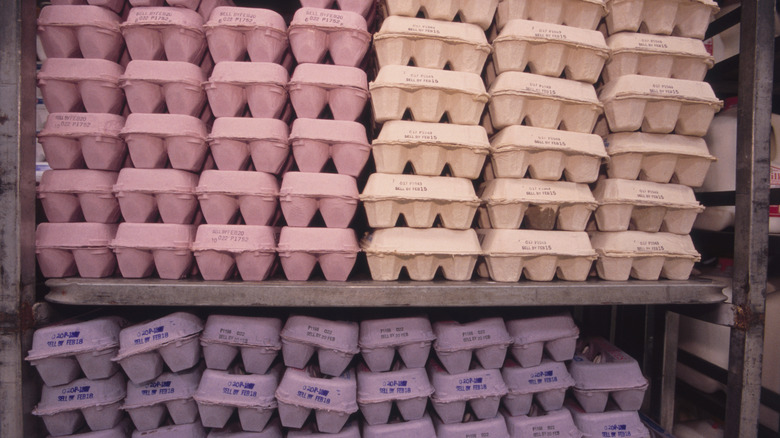Here's How To Decode The Numbers On Your Egg Carton
Eggs are one of the most versatile baking and cooking ingredients, the superstar of the farm stand and the cornerstone of the culinary world (some would say). It's not unusual to see a carton or two in almost every household, ready for use in fudgy chocolate brownies or a zesty egg salad. We're so attuned to the need for eggs, some refrigerators even come with a pre-installed egg cubby in the door (although this isn't the correct place to properly store eggs). We all know how to read the expiration date on the outside of the packaging, but those other numbers are important too and can tell you a lot about the eggs you're taking home.
Somewhere beside or below the expiration date, you'll see a three-digit code that spans anywhere from 001 to 365. This number correlates to the egg carton's pack-date on the Julian calendar, meaning 001 is equivalent to January 1 and 365 is equivalent to December 31. Unless it happens to be a leap year, in which case the numbers will be slightly different. If you're unable to do the math quickly (honestly, who's going to know off the top of their head that 258 means September 15), you can look up a Julian date chart for easier access.
Egg carton labels can tell you about freshness and origin
The third set of numbers on an egg carton typically sit beside the Julian date and begin with the letter 'P.' The three or four-digit code that follows 'P' will tell you exactly where the eggs have been processed and packaged. For example, a carton with P1160 means that the eggs came from Dows, Iowa and a carton with P2103 means that the eggs came from Turner, Maine. All USDA-graded eggs are required to include a plant processing code, which can be decoded on the official website.
The USDA requires egg cartons to print a sell by, use by, best by, or expiration date that is 30 days from or less from the pack-date to let grocery stores know when to pull the cartons from shelves. But the USDA also states that eggs are safe to eat for up to four to five weeks after the pack-date. So, once you figure out the three-digit Julian date, you can determine an expiration date a little bit later than the one printed on the carton. As long as you keep the eggs stored at the proper temperature, that carton will stay fresh and prepared for your next batch of homemade creme brulees or other culinary adventures.

